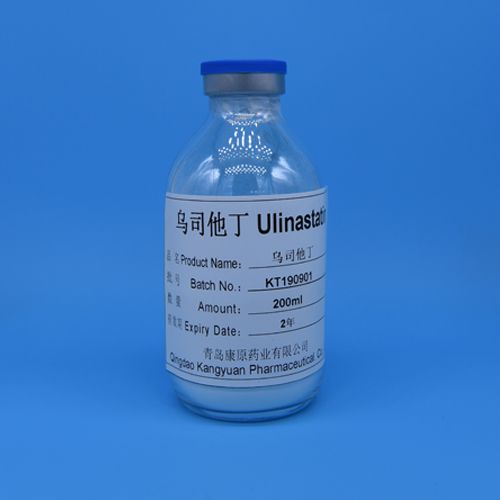To understand the pharmacological action and clinical application of
ulinastatin, and to provide reference for clinical rational drug use.
Methods: The pharmacology and clinical application of ulinastatin were
reviewed in recent years.

Results and conclusion: Ulinastatin in the treatment of pancreatitis can
effectively reduce the necrosis and edema of pancreas and inhibit the
inflammatory response of the body, which is of great value in the treatment of
pancreatitis. In the treatment of sepsis, the injury of tissues and organs can
be alleviated, the apoptosis of spleen cells can be inhibited, and the overall
survival rate of sepsis patients can be improved. The microcirculation of
tissues and organs can be improved in the treatment of shock, which is helpful
to control the continuous development of shock state. In the treatment of
ischemia-reperfusion injury, the release of oxygen free radicals and calcium
influx can be reduced, the balance of calcium ions can be adjusted, the
excitatory amino acid release and accumulation caused by calcium overload can be
blocked, and organ protection can be played by increasing the concentration of
nitric oxide and the activity of hydrolase. In the treatment of cardiopulmonary
and brain resuscitation, it can reduce the level of proinflammatory factors in
serum and achieve cerebral protection. In the treatment of lung injury, it can
play a protective role by inhibiting the related factors of inflammation
initiation. In the treatment of liver diseases, it can improve the related liver
function indicators and coagulation function of mild/moderate patients, shorten
the hospitalization period, but has no obvious therapeutic effect on severe
patients. The levels of creatine kinase isoenzyme and cardiac troponin can be
significantly reduced in patients undergoing cardiopulmonary bypass, which has a
protective effect on other tissues and organs.